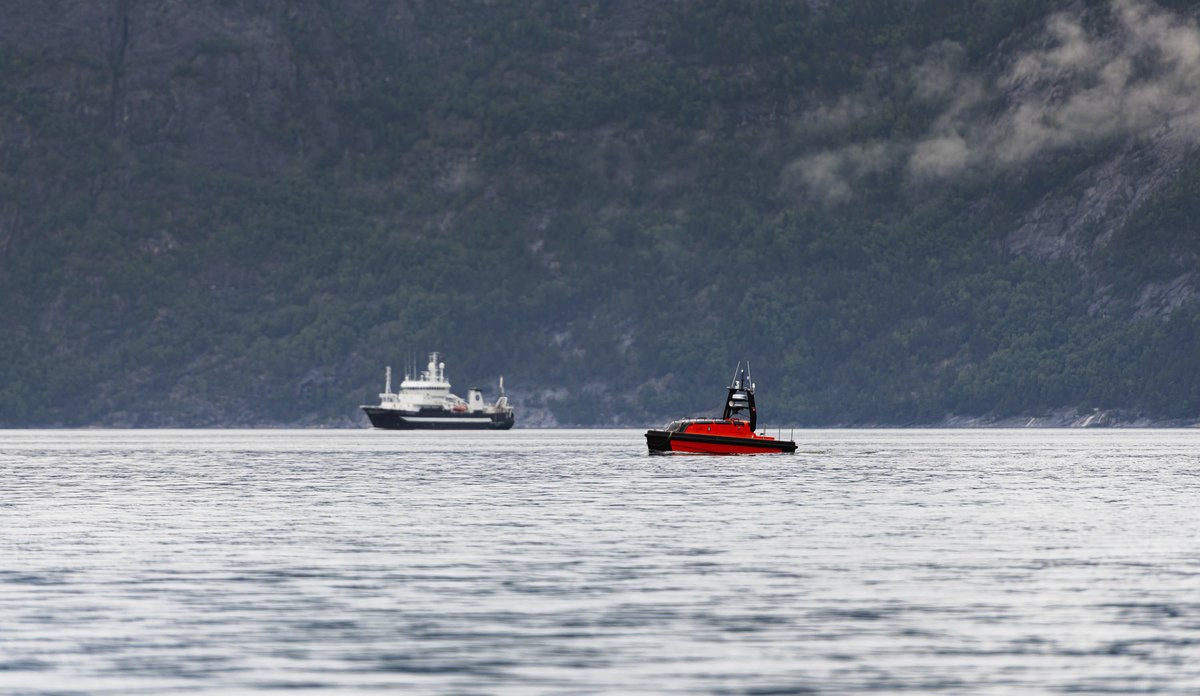CRIMAC Workshop on data processing methods for large volumes of plankton and fisheries-acoustics data

The researchers are testing the Kongsberg sounder "Brage" in tandem with RV "Kristine Bonnevie" in search of sprats in the Hardangerfjord.
Photo: Christine Fagerbakke / IMR| Date | 26. September 2024 - 27. September 2024 10:00 - 12:30 |
|---|---|
| Location | IMR Meeting room Vågen, Nykirkekaien 1, and MS Teams |
| Web page | Crimac |
Workshop details
- For contributing presentations to the WK: Registration by 1 September 2024 or until spaces are filled.
- For in person attendance: Registration by 15 September or until spaces are filled.
- For online attendance: Registration by 15 September.
Objectives
Acoustic data are being collected from a range of platforms and purposes, leading to an increase in data volume. Additionally, historical records from years of data collection are now more accessible for analysis. In both scenarios, traditional manual data processing methods are challenging as they do not scale well. The workshop will cover both the use cases where large amounts of data are collected and the technological and logistical solutions for processing and analyzing the data. The objectives of the workshop are to investigate best practices for big data processing on fisheries acoustic data, to identify current bottlenecks, and to write up a summary report with guidance for the community.
Approach
The first part of the workshop will focus on use-cases that have collected or plan to collect large amounts of acoustic data, what the objectives are for the data collection, how the data processing is currently carried out, and the challenges that the users are facing.
The second part of the workshop will focus on technological solutions for working with big data and how these technologies can be applied to fisheries acoustics data.
Program – day 1 (Thursday 26th)
10:00-10:15 Doors open and morning coffee
10:15-10:45 Welcome and introductions
Welcome address, introduction to the CRIMAC SFI (www.crimac.no), and plan for the day (Nils Olav Handegard, IMR)
10:45-11:30 Use cases (3)
10-minute presentations + 5 minutes for questions.
Projects at IMR relying on large scale analysis of acoustic data
Geir Pedersen, IMR, Norway
The potential of using fisheries acoustics to inform the management of the krill fishery
Dominik Bahlburg, AWI, Germany
Processing acoustic data collected from the Dutch pelagic fishing industry
Luca Possenti, Maria Sokolova, Benoit Berges, Wageningen University & Research, the Netherlands
11:30-12:30 Lunch
12:30-14:00 Use cases and data processing techniques (6)
10-minute presentations + 5 minutes for questions.
NOAA Fisheries Active Acoustics Strategic Initiative on AI and model-based echo classification.
Mike Jech, NOAA, USA
Acoustic data processing pipelines for autonomous vehicles.
Pierre Priou, Akvaplan-niva, Norway
Processing of large datasets using python and Korona.
Inge Eliassen, NORCE and Ketil Malde, IMR, Norway
Echosounder Data Service (EDS): A cloud-based software-as-a-service (SaaS) that delivers echosounder data products, analytics, and reports.
Roland Proud, CUPAR analytics, Great Britain
Automatic processing of echosounder data from the Antarctic krill fishery.
Sebastian Menze, IMR, Norway
Ifremer strategy on data processing for large volumes of active acoustic data
Cyrille Poncelet, Laurent Berger, Mathieu Doray, IFREMER
14:00-14:30 Short break and coffee discussions
14:30-16:30 Data processing techniques (6)
10-minute presentations + 5 minutes for questions.
Pipeline for testing convolutional neural networks for Acoustic Trawl Surveys
Arne Johannes Holmin, IMR, Norway and Ahmet Pala, UiB, Norway
Data Analysis: Tradeoffs Between Real-Time and Post-Processing
Leif Bildøy, Kongsberg Discovery, Norway
19:00 Dinner at Nykirkaien 1
Program – day 2 (Friday 27th)
08:30-09:00 Doors open and morning coffee
09:00-11:30 Discussion and summary recommendations
11:30-12:30 Lunch
12:30 Meeting closure
Published: 06.06.2024 Updated: 20.09.2024


